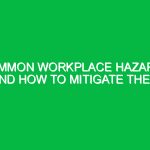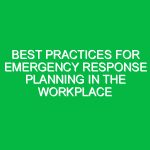Stress is a common occurrence in today’s fast-paced work environment, affecting millions of individuals worldwide. While some level of stress can be motivating and drive productivity, excessive stress can have detrimental effects on both the physical and mental health of employees, as well as on workplace safety. In this article, we will explore the impact of stress on health and safety in the workplace and discuss strategies to mitigate its negative effects.
The Physical Effects of Stress
When individuals experience stress, their bodies release hormones such as cortisol and adrenaline, triggering the “fight or flight” response. While this response is essential for survival in threatening situations, chronic stress can lead to a range of physical health issues, including:
- High blood pressure
- Cardiovascular disease
- Compromised immune system
- Digestive problems
These physical health issues can not only impact the well-being of employees but also increase the likelihood of workplace accidents and injuries due to decreased focus, impaired decision-making, and reduced coordination.
The Mental Effects of Stress
In addition to its physical effects, stress can also take a toll on mental health. Employees experiencing chronic stress may exhibit symptoms such as anxiety, depression, irritability, and burnout. These mental health issues can lead to decreased job satisfaction, lower productivity, and increased absenteeism, further compromising workplace safety.
Strategies to Manage Stress in the Workplace
Employers play a crucial role in creating a work environment that promotes employee well-being and minimizes stress. Some effective strategies to manage stress in the workplace include:
Implementing Employee Assistance Programs
Employee Assistance Programs (EAPs) provide employees with access to counseling services, mental health resources, and stress management techniques. By offering support to employees facing personal or work-related stressors, EAPs can help prevent the escalation of stress-related issues.
Promoting Work-Life Balance
Encouraging employees to maintain a healthy work-life balance can help prevent burnout and reduce stress levels. Employers can implement flexible work schedules, remote work options, and wellness programs to support employees in achieving a harmonious balance between work and personal life.
Providing Training and Education
Training employees on stress management techniques, mindfulness practices, and resilience-building skills can empower them to cope with stress more effectively. By equipping employees with the tools to manage stress, employers can create a more resilient workforce that is better equipped to handle workplace challenges.
Conclusion
Stress can have a profound impact on both the health and safety of employees in the workplace. By recognizing the physical and mental effects of stress and implementing strategies to manage it effectively, employers can create a safer, healthier work environment for their employees. Prioritizing employee well-being and promoting a culture of support and resilience can help mitigate the negative effects of stress and foster a more productive and engaged workforce.


